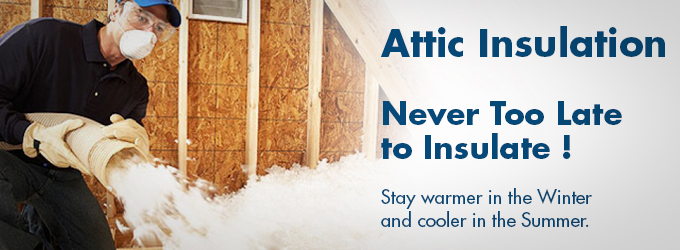HOW ATTIC INSULATION IN GEORGIA WORKS
Insulation is measured in R-values. the higher the R-value, the better your walls and roof will resist the transfer of heat. The U.S. Department of Energy (DOE) recommends ranges of R-values based on local heating and cooling costs and climate conditions in different areas of the nation. The map and chart below show the DOE recommendations for how insulation in Georgia works. State and local codes in some parts of the country may require lower R-values than the DOE recommendations, which are based on cost effectiveness.
Although how insulation in Georgia works, insulation can be made from a variety of materials, it usually comes in three types; each type has different characteristics.
Rolls and Batts or Blanket Insulation
are flexible products made from mineral fibers, such as fiberglass and rock wool. They are available in widths suited to standard spacings of wall studs and attic or floor joists: 2×4 walls can hold R-13 or R-15 batts; 2×6 walls can have R-19 or R-21 products.
Loose-fill insulation
Usually made of fiberglass, rock wool, or cellulose-comes in shreds, granules, or nodules. These small particles should be blown into spaces using special pneumatic equipment. The blown-in material conforms readily to building cavities and attics. Therefore, loose-fill insulation is well suited for places where it is difficult to install other types of insulation.
Recommended Home Insulation R– Values
Insulation level are specified by R-Value. R-Value is a measure of insulation’s ability to resist heat traveling through it. The higher the R-Value the better the thermal performance of the insulation. The table below shows what levels of insulation are cost-effective for different climates and locations in the home.
Recommended insulation levels for retrofitting existing wood-framed buildings

| Zone | Add Insulation to Attic | Floor | |
|---|---|---|---|
| Uninsulated Attic | Existing 3–4 Inches of Insulation | ||
| 1 | R30 to R49 | R25 to R30 | R13 |
| 2 | R30 to R60 | R25 to R38 | R13 to R19 |
| 3 | R30 to R60 | R25 to R38 | R19 to R25 |
| 4 | R38 to R60 | R38 | R25 to R30 |
| 5 to 8 | R49 to R60 | R38 to R49 | R25 to R30 |
| Wall Insulation: Whenever exterior siding is removed on an
Uninsulated wood-frame wall:
Insulated wood-frame wall:
|
|||
If you live in the Atlanta, Alpharetta, Milton,Buford, Cumming, Dawsonville, Gainesville,Flowery Branch, Johns Creek, Milton, Dunwoody, Sandy Springs, Smyrna, Dallas, Powder Springs, Acworth, Lawrenceville, Kennesaw, Marietta, Roswell, Duluth, Decatur, Stone Mountain, Canton, or another area in the suburbs of Atlanta call Aladdin Insulation to schedule residential insulation and energy audit services. 678-528-7115
